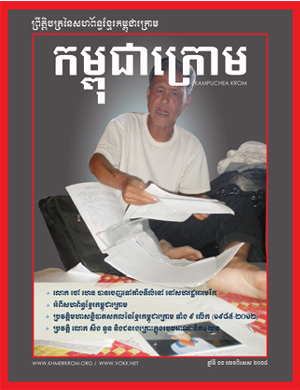Multivariate analysis was performed to control confounding variables (birth weight and head circumference), and it was found that having a perineal body length of 3.0 cm (adjusted OR: 5.26; 95% CI 1.52-18.18) is associated with third- and fourth-degree perineal tears if an episiotomy is performed.That is, regarding the occurrence of a rupture if an episiotomy was performed, the odds for . 'button-holing'),1 a history of surgical repair of the bladder or fistula. The perineal membrane (2) anchors in the perineal body and follows the anterior contour of the puboperineal muscle (3). In the perineal body all structures are hypoechogenic in this projection. Emollients are. References: Your healthcare provider will likely provide you with a squeeze bottle or sitz bath so you can keep your perineal area moist and clean after delivery. For more severe tears, you may need stitches or surgical repair of the tear. Because the vaginal area has a good blood supply, the tissues in this area heal well, and minor tears may require no treatment. General causes. 1. Dont perform any activities that will cause the stitches to tear or the wound to pop back open. This medication isn't recommended for women who have had breast cancer or who are at high risk of breast cancer. A vaginal tear is a common complication of childbirth, but these injuries can happen at other times, too. Do this for two to four days after childbirth. The majority of obstetric anal sphincter injuries are third-degree lacerations that involve the anal sphincter complex without disrupting the rectal mucosa.1 The anal sphincter complex comprises the larger external anal sphincter containing striated muscle and a distinct capsule plus the small internal anal sphincter of involuntary smooth muscle that often cannot be identified. Fortunately, most of these tears do not lead to adverse functional outcomes. Let your doctor know if youre experiencing perineal pain, bowel control problems, or other health issues due to your tear. The number of women suffering severe third and fourth-degree . Copyright 2003 by the American Academy of Family Physicians. Engage in activity that causes perineum to remain wet (like in hot tubs, swimming pools) Use Vaseline, oils, greases, bubble bath, bath oils, feminine sprays, etc. Minimizing the use of episiotomy and forceps deliveries can decrease the occurrence of severe perineal lacerations. Repair of a second-degree laceration ( Figure 3) requires approximation of the vaginal tissues, muscles of the perineal body, and perineal skin. This article discusses a repair method that emphasizes anatomic detail, with the expectation that an anatomically correct perineal repair may result in a better long-term functional outcome. Giving birth on your hands and knees MAY reduce the likelihood of a tear. With these types of tears, you may only need treatment if the wound gets infected. Perineal tear is a traumatic injury in obstetrics and gynecology that occurs when excessive pressure of the adjacent part of the fetus on the vagina and adjacent anatomical structures. For lacerations extending deep into the vagina, a Gelpi or Deaver retractor facilitates visualization. Make sure to read the label and take the medication only as directed. When tied, the knots are on the top of the overlapped sphincter ends. Your perineum is the area between your vaginal opening and anus. Being active during labour and birth and avoiding an epidural. The puborectalis muscle and the external anal sphincter contribute additional muscle fibers. If the laceration has separated the rectovaginal fascia from the perineal body, the fascia is reattached to the perineal body with two vertical interrupted 3-0 polyglactin 910 sutures (Figure 8). Use of a large needle facilitates proper suture placement. Reducing maternal effort - e.g. Do Kegel exercises before your due date and after delivery to stimulate circulation and healing. See permissionsforcopyrightquestions and/or permission requests. It provides effective soothing relief for dry skin and its mild formula is safe for external use on your baby's most delicate, sensitive skin. mothers whose babies have a high birth weight, mothers who had assisted birth, such as with forceps or vacuum, applying hot water or hot packs to your perineal area, squatting to keep from stretching your skin too much, sexual activity until healing is complete, tampons, but you can use pads after delivery. trouble controlling your bowels after a severe tear, intense pain while urinating, or increased frequency of urination, sanitary pads soaked with blood or youre passing large blood clots, severe pain in your lower abdomen, vagina, or perineum, keeping your perineum warm, such as with a warm towel, to increase blood flow and soften the muscles. This method may be used before or during the second stage of labor. Ospemifene (Osphena), a selective estrogen receptor modulator (SERM) medication taken by mouth is used to treat painful intercourse associated with vaginal atrophy. Avoid douching while you have a vaginal tear. Duct obstruction, entrapment of pudendal nerve, abscess, prostatitis, perineural cyst, ischiorectal abscess, benign prostatic hypertrophy, and prostatitis. Drink plenty of fluids. More than 53-89% of women will experience some form of perineal laceration at the time of delivery. http://brochures.mater.org.au/brochures/mater-mothers-private-redland/recovering-from-3rd-or-4th-degree-perineal-tears. This topic will review evaluation and repair of perineal and other obstetric lacerations, such as labial, sulcal, and periurethral lacerations, as well as repair of episiotomy. Cochrane review involving four trials with 2,497 women, Cochrane review with four studies involving 1,799 women for warm compresses, six studies involving 2,618 women for perineal massage, and a systematic review of manual perineal support including six randomized and nonrandomized studies involving 81,391 women, Cochrane review involving two studies with 154 women showing similar results in both groups, Randomized controlled trial of 1,780 women with first- or second-degree lacerations, Randomized controlled trial of 102 patients, with 74 patients randomized to surgical glue, Cochrane review involving 16 studies with 8,184 women showed improvements in continuous suture group but no differences in long-term pain, Cochrane review involving 10 studies with 1,825 women showed improvement in pain compared with no treatment, Laceration involving the perineal muscles but not involving the anal sphincter, Laceration involving the anal sphincter muscles, Laceration involving the anal sphincter complex and rectal epithelium, Large fetal weight (> 4,000 g [8 lb, 13.1 oz]), Occipitotransverse or occipitoposterior position at delivery, Epidural anesthesia (increases risk of severe lacerations, decreases overall lacerations), Operative vaginal delivery (i.e., forceps, vacuum), Prolonged second stage of labor (> 60 minutes), Immediate, unlimited access to all AFP content, Immediate, unlimited access to this issue's content, Immediate, unlimited access to just this article. Obstetric perineal lacerations are classified as first to fourth degree, depending on their depth. Our experts continually monitor the health and wellness space, and we update our articles when new information becomes available. First-degree lacerations involve only the perineal skin without extending into the musculature.1 Second-degree lacerations involve the perineal muscles without affecting the anal sphincter complex. Some symptoms of poor bowel control include leaking stool or not being able to hold in gas. The running suture is carried to the hymenal ring and tied proximal to the ring, completing closure of the vaginal mucosa and rectovaginal fascia. After toileting, if using toilet paper always wipe always from front to back end. 2023 Flo Health Inc., Flo Health UK Limited, Ovulation calculator: Figure out your most fertile days, hCG calculator: How to track your hCG levels at home, Pregnancy test calculator: Figure out when a pregnancy test is most accurate, Period calculator: Predict when your next period will arrive. You should also see a doctor if you think the tear is infected. Similar to any freshly repaired wound, it will take time, maybe around 7 to 10 days for the site to heal, but the wound will hurt far longer than that. document.getElementById( "ak_js_1" ).setAttribute( "value", ( new Date() ).getTime() ); --> CLICK HERE TO FIND OUT ABOUT OUR 4 WEEK PELVIC FLOOR PROGRAM. Obstetric lacerations are a common complication of vaginal delivery. Lacerations involving the anal sphincter complex require additional expertise, exposure, and lighting; transfer to an operating room should be considered. Squirt warm water on the perineum and vulva during and after urination. Avoid using any powder, creams, or ointments unless otherwise advised by your doctor. Approximately 3% of lacerations involve clinically evident obstetric anal sphincter injuries, doubling the risk of fecal incontinence at five years postpartum.3,4 These lacerations are further classified by the extent of anal sphincter injury (Table 1).1, Less than 50% external anal sphincter involvement, More than 50% external anal sphincter involvement. However, some may need medical care. Prolonged or very short pushing phase. . They occur when your babys head is too large for your vagina to stretch around. Surgical glue can repair first-degree lacerations with similar cosmetic and functional outcomes with less pain, less time, and lower local anesthetic use. While its healing, wash the tear with soap and water every few hours and change your dressing if you have one. What is an episiotomy? Emergent repair of a fourth degree perineal tear - a video vignetteThis video is associated with a text under submission for publication in the journal Color. Second-degree perineal tear - For non-absorbable sutures: remove the stitches between the 5 th and 8 th day. How to Use Barrier Creams. After a vaginal tear, some home remedies may help you remain comfortable or heal more quickly. Repairing hemostatic first- and second-degree lacerations does not improve short-term outcomes compared with conservative care. If the tissues are overstretched, they tear. In a fourth-degree tear, the rectal mucosa is torn as well. The apex of the rectal mucosa is identified, and the mucosa is approximated using closely spaced interrupted or running 4-0 polyglactin 910 sutures (Figure 10). 2005-2023 Healthline Media a Red Ventures Company. Obstetrician & Gynecologist, Medical Consultant at Flo, https://www.fairview.org/patient-education/116680EN Rest: Rest is key and often helped with the use of a supportive device, or crutches in severe cases. Local perineal cooling during the first three days after perineal repair reduces pain. The literature contains little information on patient care after the repair of perineal lacerations. Most deliveries cause some degree of tearing, though severe tears are quite rare. A Cochrane review demonstrated that liberal use of episiotomy does not reduce the incidence of anal sphincter lacerations and is associated with increased perineal trauma.18 [Evidence level A, systematic review of RCTs] A meta-analysis of eight randomized trials of vacuum extraction versus forceps delivery demonstrated that one sphincter tear would be prevented for every 18 women delivered with vacuum rather than forceps.19 [Evidence level B, systematic review of lower quality RCTs]. During birth, vaginal tears are very common. Once your . A fourth-degree laceration extends to the anal sphincter and the tissue beneath it. First-degree perineal tear First-degree tears happen when only the perineal skin is torn and leads to a mild burning sensation or stinging feeling when urinating. To prevent vaginal tearing during delivery, medical professionals can massage the perineum. Repair of a fourth-degree laceration requires approximation of the rectal mucosa, internal anal sphincter, and external anal sphincter (Figure 9). Last Updated: December 27, 2022 1 Perineal trauma involves any type of damage to the female genitalia during labour, which can occur spontaneously or iatrogenically (via episiotomy or instrumental delivery). The third degree tears involve the perineal muscles and also the muscles which surround the anal canal. Third degree: Injury to perineum involving the anal sphincter complex 3a: Less than 50% of EAS torn 3b: More than 50% of EAS torn 3c: Both EAS and IAS torn Fourth degree: Injury to perineum involving the EAS, IAS and anal epithelium Rectal buttonhole tear: Injury to rectal mucosa with an intact IAS Third and fourth degree tears {"smallUrl":"https:\/\/www.wikihow.com\/images\/thumb\/f\/f7\/Recognize-and-Avoid-Vaginal-Infections-Step-4-Version-3.jpg\/v4-460px-Recognize-and-Avoid-Vaginal-Infections-Step-4-Version-3.jpg","bigUrl":"\/images\/thumb\/f\/f7\/Recognize-and-Avoid-Vaginal-Infections-Step-4-Version-3.jpg\/aid8833231-v4-728px-Recognize-and-Avoid-Vaginal-Infections-Step-4-Version-3.jpg","smallWidth":460,"smallHeight":345,"bigWidth":728,"bigHeight":546,"licensing":"
License: Creative Commons<\/a> License: Creative Commons<\/a> License: Creative Commons<\/a> License: Creative Commons<\/a> License: Creative Commons<\/a> License: Creative Commons<\/a> License: Creative Commons<\/a> License: Creative Commons<\/a> License: Creative Commons<\/a> License: Creative Commons<\/a> License: Creative Commons<\/a> License: Creative Commons<\/a> License: Creative Commons<\/a> License: Creative Commons<\/a> License: Creative Commons<\/a> License: Creative Commons<\/a> License: Creative Commons<\/a> License: Creative Commons<\/a> License: Creative Commons<\/a>
\n<\/p>
\n<\/p><\/div>"}, {"smallUrl":"https:\/\/www.wikihow.com\/images\/thumb\/f\/f7\/Clean-Safely-During-Pregnancy-Step-1.jpg\/v4-460px-Clean-Safely-During-Pregnancy-Step-1.jpg","bigUrl":"\/images\/thumb\/f\/f7\/Clean-Safely-During-Pregnancy-Step-1.jpg\/aid8833231-v4-728px-Clean-Safely-During-Pregnancy-Step-1.jpg","smallWidth":460,"smallHeight":345,"bigWidth":728,"bigHeight":546,"licensing":"
\n<\/p>
\n<\/p><\/div>"}, {"smallUrl":"https:\/\/www.wikihow.com\/images\/thumb\/e\/ee\/Recognize-and-Avoid-Vaginal-Infections-Step-11.jpg\/v4-460px-Recognize-and-Avoid-Vaginal-Infections-Step-11.jpg","bigUrl":"\/images\/thumb\/e\/ee\/Recognize-and-Avoid-Vaginal-Infections-Step-11.jpg\/aid8833231-v4-728px-Recognize-and-Avoid-Vaginal-Infections-Step-11.jpg","smallWidth":460,"smallHeight":345,"bigWidth":728,"bigHeight":546,"licensing":"
\n<\/p>
\n<\/p><\/div>"}, {"smallUrl":"https:\/\/www.wikihow.com\/images\/thumb\/f\/fa\/Treat-and-Prevent-Crabs-Step-9-Version-3.jpg\/v4-460px-Treat-and-Prevent-Crabs-Step-9-Version-3.jpg","bigUrl":"\/images\/thumb\/f\/fa\/Treat-and-Prevent-Crabs-Step-9-Version-3.jpg\/aid8833231-v4-728px-Treat-and-Prevent-Crabs-Step-9-Version-3.jpg","smallWidth":460,"smallHeight":345,"bigWidth":728,"bigHeight":546,"licensing":"
\n<\/p>
\n<\/p><\/div>"}, {"smallUrl":"https:\/\/www.wikihow.com\/images\/thumb\/b\/b8\/Treat-Crabs-%28Pubic-Lice%29-Step-4-Version-2.jpg\/v4-460px-Treat-Crabs-%28Pubic-Lice%29-Step-4-Version-2.jpg","bigUrl":"\/images\/thumb\/b\/b8\/Treat-Crabs-%28Pubic-Lice%29-Step-4-Version-2.jpg\/aid8833231-v4-728px-Treat-Crabs-%28Pubic-Lice%29-Step-4-Version-2.jpg","smallWidth":460,"smallHeight":345,"bigWidth":728,"bigHeight":546,"licensing":"
\n<\/p>
\n<\/p><\/div>"}, {"smallUrl":"https:\/\/www.wikihow.com\/images\/thumb\/0\/09\/Cope-with-Sleep-Paralysis-Step-16.jpg\/v4-460px-Cope-with-Sleep-Paralysis-Step-16.jpg","bigUrl":"\/images\/thumb\/0\/09\/Cope-with-Sleep-Paralysis-Step-16.jpg\/aid8833231-v4-728px-Cope-with-Sleep-Paralysis-Step-16.jpg","smallWidth":460,"smallHeight":345,"bigWidth":728,"bigHeight":546,"licensing":"
\n<\/p>
\n<\/p><\/div>"}, Educational website from one of the world's leading hospitals, {"smallUrl":"https:\/\/www.wikihow.com\/images\/thumb\/0\/01\/Sleep-Longer-Step-2-Version-5.jpg\/v4-460px-Sleep-Longer-Step-2-Version-5.jpg","bigUrl":"\/images\/thumb\/0\/01\/Sleep-Longer-Step-2-Version-5.jpg\/aid8833231-v4-728px-Sleep-Longer-Step-2-Version-5.jpg","smallWidth":460,"smallHeight":345,"bigWidth":728,"bigHeight":546,"licensing":"
\n<\/p>
\n<\/p><\/div>"}, Collection of medical information sourced from the US National Library of Medicine, {"smallUrl":"https:\/\/www.wikihow.com\/images\/thumb\/6\/69\/Cure-Piles-Naturally-Step-7-Version-2.jpg\/v4-460px-Cure-Piles-Naturally-Step-7-Version-2.jpg","bigUrl":"\/images\/thumb\/6\/69\/Cure-Piles-Naturally-Step-7-Version-2.jpg\/aid8833231-v4-728px-Cure-Piles-Naturally-Step-7-Version-2.jpg","smallWidth":460,"smallHeight":345,"bigWidth":728,"bigHeight":546,"licensing":"
\n<\/p>
\n<\/p><\/div>"}, {"smallUrl":"https:\/\/www.wikihow.com\/images\/thumb\/1\/11\/Sleep-Longer-Step-17-Version-2.jpg\/v4-460px-Sleep-Longer-Step-17-Version-2.jpg","bigUrl":"\/images\/thumb\/1\/11\/Sleep-Longer-Step-17-Version-2.jpg\/aid8833231-v4-728px-Sleep-Longer-Step-17-Version-2.jpg","smallWidth":460,"smallHeight":345,"bigWidth":728,"bigHeight":546,"licensing":"
\n<\/p>
\n<\/p><\/div>"}, {"smallUrl":"https:\/\/www.wikihow.com\/images\/thumb\/a\/a3\/Empty-the-Bladder-Step-2-Version-4.jpg\/v4-460px-Empty-the-Bladder-Step-2-Version-4.jpg","bigUrl":"\/images\/thumb\/a\/a3\/Empty-the-Bladder-Step-2-Version-4.jpg\/aid8833231-v4-728px-Empty-the-Bladder-Step-2-Version-4.jpg","smallWidth":460,"smallHeight":345,"bigWidth":728,"bigHeight":546,"licensing":"
\n<\/p>
\n<\/p><\/div>"}, {"smallUrl":"https:\/\/www.wikihow.com\/images\/thumb\/c\/ce\/Treat-Crabs-%28Pubic-Lice%29-Step-6-Version-2.jpg\/v4-460px-Treat-Crabs-%28Pubic-Lice%29-Step-6-Version-2.jpg","bigUrl":"\/images\/thumb\/c\/ce\/Treat-Crabs-%28Pubic-Lice%29-Step-6-Version-2.jpg\/aid8833231-v4-728px-Treat-Crabs-%28Pubic-Lice%29-Step-6-Version-2.jpg","smallWidth":460,"smallHeight":345,"bigWidth":728,"bigHeight":546,"licensing":"
\n<\/p>
\n<\/p><\/div>"}, {"smallUrl":"https:\/\/www.wikihow.com\/images\/thumb\/e\/e6\/Recognize-and-Avoid-Vaginal-Infections-Step-1-Version-3.jpg\/v4-460px-Recognize-and-Avoid-Vaginal-Infections-Step-1-Version-3.jpg","bigUrl":"\/images\/thumb\/e\/e6\/Recognize-and-Avoid-Vaginal-Infections-Step-1-Version-3.jpg\/aid8833231-v4-728px-Recognize-and-Avoid-Vaginal-Infections-Step-1-Version-3.jpg","smallWidth":460,"smallHeight":345,"bigWidth":728,"bigHeight":546,"licensing":"
\n<\/p>
\n<\/p><\/div>"}, {"smallUrl":"https:\/\/www.wikihow.com\/images\/thumb\/b\/b1\/Recognize-and-Avoid-Vaginal-Infections-Step-9.jpg\/v4-460px-Recognize-and-Avoid-Vaginal-Infections-Step-9.jpg","bigUrl":"\/images\/thumb\/b\/b1\/Recognize-and-Avoid-Vaginal-Infections-Step-9.jpg\/aid8833231-v4-728px-Recognize-and-Avoid-Vaginal-Infections-Step-9.jpg","smallWidth":460,"smallHeight":345,"bigWidth":728,"bigHeight":546,"licensing":"
\n<\/p>
\n<\/p><\/div>"}, {"smallUrl":"https:\/\/www.wikihow.com\/images\/thumb\/1\/16\/Treat-and-Prevent-Crabs-Step-15-Version-3.jpg\/v4-460px-Treat-and-Prevent-Crabs-Step-15-Version-3.jpg","bigUrl":"\/images\/thumb\/1\/16\/Treat-and-Prevent-Crabs-Step-15-Version-3.jpg\/aid8833231-v4-728px-Treat-and-Prevent-Crabs-Step-15-Version-3.jpg","smallWidth":460,"smallHeight":345,"bigWidth":728,"bigHeight":546,"licensing":"
\n<\/p>
\n<\/p><\/div>"}, {"smallUrl":"https:\/\/www.wikihow.com\/images\/thumb\/6\/6a\/Remove-a-Condom-Step-10.jpg\/v4-460px-Remove-a-Condom-Step-10.jpg","bigUrl":"\/images\/thumb\/6\/6a\/Remove-a-Condom-Step-10.jpg\/aid8833231-v4-728px-Remove-a-Condom-Step-10.jpg","smallWidth":460,"smallHeight":345,"bigWidth":728,"bigHeight":546,"licensing":"
\n<\/p>
\n<\/p><\/div>"}, {"smallUrl":"https:\/\/www.wikihow.com\/images\/thumb\/c\/c0\/Gain-Energy-During-Pregnancy-Step-30.jpg\/v4-460px-Gain-Energy-During-Pregnancy-Step-30.jpg","bigUrl":"\/images\/thumb\/c\/c0\/Gain-Energy-During-Pregnancy-Step-30.jpg\/aid8833231-v4-728px-Gain-Energy-During-Pregnancy-Step-30.jpg","smallWidth":460,"smallHeight":345,"bigWidth":728,"bigHeight":546,"licensing":"
\n<\/p>
\n<\/p><\/div>"}, {"smallUrl":"https:\/\/www.wikihow.com\/images\/thumb\/e\/ed\/Strengthen-Your-Bladder-and-Urinate-Less-Often-Step-14.jpg\/v4-460px-Strengthen-Your-Bladder-and-Urinate-Less-Often-Step-14.jpg","bigUrl":"\/images\/thumb\/e\/ed\/Strengthen-Your-Bladder-and-Urinate-Less-Often-Step-14.jpg\/aid8833231-v4-728px-Strengthen-Your-Bladder-and-Urinate-Less-Often-Step-14.jpg","smallWidth":460,"smallHeight":345,"bigWidth":728,"bigHeight":546,"licensing":"
\n<\/p>
\n<\/p><\/div>"}, {"smallUrl":"https:\/\/www.wikihow.com\/images\/thumb\/5\/5f\/Cope-with-Sleep-Paralysis-Step-11-Version-3.jpg\/v4-460px-Cope-with-Sleep-Paralysis-Step-11-Version-3.jpg","bigUrl":"\/images\/thumb\/5\/5f\/Cope-with-Sleep-Paralysis-Step-11-Version-3.jpg\/aid8833231-v4-728px-Cope-with-Sleep-Paralysis-Step-11-Version-3.jpg","smallWidth":460,"smallHeight":345,"bigWidth":728,"bigHeight":546,"licensing":"
\n<\/p>
\n<\/p><\/div>"}, {"smallUrl":"https:\/\/www.wikihow.com\/images\/thumb\/2\/29\/Cope-with-Sleep-Paralysis-Step-9-Version-3.jpg\/v4-460px-Cope-with-Sleep-Paralysis-Step-9-Version-3.jpg","bigUrl":"\/images\/thumb\/2\/29\/Cope-with-Sleep-Paralysis-Step-9-Version-3.jpg\/aid8833231-v4-728px-Cope-with-Sleep-Paralysis-Step-9-Version-3.jpg","smallWidth":460,"smallHeight":345,"bigWidth":728,"bigHeight":546,"licensing":"
\n<\/p>
\n<\/p><\/div>"}, {"smallUrl":"https:\/\/www.wikihow.com\/images\/thumb\/8\/80\/Empty-the-Bladder-Step-6-Version-4.jpg\/v4-460px-Empty-the-Bladder-Step-6-Version-4.jpg","bigUrl":"\/images\/thumb\/8\/80\/Empty-the-Bladder-Step-6-Version-4.jpg\/aid8833231-v4-728px-Empty-the-Bladder-Step-6-Version-4.jpg","smallWidth":460,"smallHeight":345,"bigWidth":728,"bigHeight":546,"licensing":"















